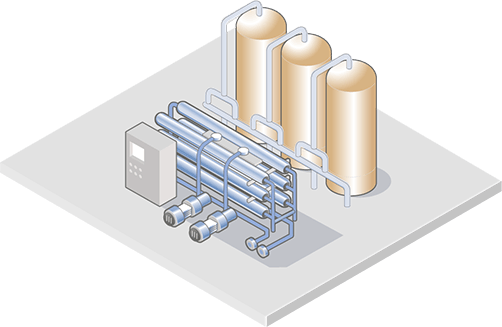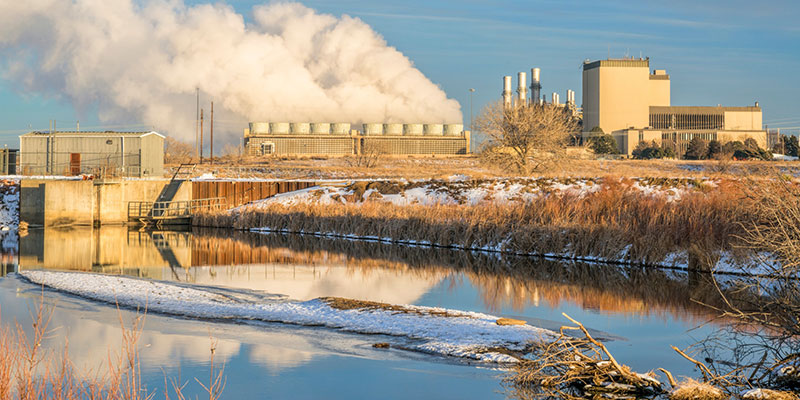Industrial Waste Water Treatment-- Advanced Solutions for Cleanser Effluents
Industrial Waste Water Treatment-- Advanced Solutions for Cleanser Effluents
Blog Article
Innovations and Advancements in Hazardous Waste Water Treatment Technologies
The landscape of industrial wastewater therapy is undertaking a transformative change, driven by technologies that improve both performance and sustainability. Arising innovations, such as membrane layer bioreactors and microbial gas cells, are redefining contaminant elimination procedures while adding to power generation. Furthermore, source healing approaches are getting traction, aligning with circular economic situation principles. As regulative requirements advance, the assimilation of AI and artificial intelligence right into wastewater management systems guarantees to make certain and simplify operations conformity. However, the full effects of these improvements raise critical inquiries about their scalability and long-lasting influence on industry methods.
Summary of Drainage Therapy Technologies
Wastewater treatment technologies incorporate a variety of techniques developed to get rid of pollutants from industrial effluents before their launch right into the atmosphere. These technologies are critical for maintaining environmental balance and guaranteeing conformity with ecological regulations. The main groups of wastewater therapy consist of physical, chemical, and biological techniques, each serving distinctive purposes based upon the nature of the impurities present.

Organic therapy approaches use bacteria to weaken raw material, making them especially efficient for organic-rich effluents. Strategies like turned on sludge and biofilm activators harness the all-natural destruction capabilities of microorganisms, resulting in significant decreases in biochemical oxygen demand (BODY)
Advanced Filtration Techniques
Advanced filtration strategies represent a critical development in the world of commercial wastewater therapy, boosting the performance of impurity removal procedures. Industrial Waste Water Treatment. These approaches incorporate a series of modern technologies, including microfiltration, ultrafiltration, nanofiltration, and reverse osmosis, which supply consecutive obstacles for different particle dimensions and chemical structures
Microfiltration and ultrafiltration use membrane layer systems to remove put on hold solids, microorganisms, and larger organic molecules, boosting the high quality of effluent before additional treatment. Nanofiltration bridges the void in between ultrafiltration and turn around osmosis, properly removing divalent ions and organic substances, hence decreasing the load on downstream processes.
Reverse osmosis supplies the highest degree of purification by permitting only water and tiny particles to travel through its semi-permeable membrane layers, making it suitable for redeeming premium water from industrial effluents. Current innovations in membrane technology, including the growth of more fouling-resistant and resilient materials, have substantially improved functional performance and decreased expenses.
Including these sophisticated purification methods not only improves the overall treatment procedure however additionally adds to sustainability initiatives by enabling water reuse and resource recuperation in industrial setups. (Industrial Waste Water Treatment)
Organic Therapy Innovations

Additionally, the development of crafted biological systems, such as membrane bioreactors (MBRs), combines biological therapy with sophisticated membrane layer filtration. This combination enables greater effluent top quality and minimized impact, making it suitable for space-constrained commercial centers. Advancements in genetically engineered microbes have likewise emerged, boosting the biodegradation of details impurities, such as drugs and hefty metals, that are typically testing to get rid of.
Furthermore, the application of bioaugmentation strategies, where useful germs are presented to enhance the existing organic treatment processes, has shown encouraging lead to enhancing therapy efficiency. These developments collectively represent a fad in the direction of more reliable and lasting organic therapy approaches that can adapt to the developing intricacies of commercial wastewater streams. As industries remain to prioritize ecological compliance, these organic innovations will play a vital duty in wastewater monitoring.

Source Recovery Techniques
In industrial settings, the integration of source healing approaches has ended up being progressively crucial for boosting sustainability and lessening waste. These techniques concentrate on removing important materials and power from wastewater streams, consequently changing potential pollutants right into multiple-use sources.
One popular approach is vitamins and mineral recuperation, where nitrogen and phosphorus, often present over in wastewater, are captured and converted right into plant foods. This not only reduces environmental impacts yet also offers a round economy service for farming applications. Additionally, modern technologies such as anaerobic digestion permit the conversion of natural waste into biogas, a renewable resource resource that can counter fossil fuel use in commercial operations.
Additionally, progressed purification and membrane layer technologies help with the healing of commercial byproducts such as metals and salts. These recovered products can be rehabilitated right into manufacturing procedures, reducing the demand for virgin resources.
Future Patterns in Drainage Monitoring
As industries increasingly prioritize sustainability, the future of wastewater administration is set to undergo substantial changes. Technological developments, such as expert system and equipment discovering, will certainly allow much more effective surveillance and management of wastewater systems. These technologies can forecast maintenance demands, enhance treatment procedures, and improve decision-making, inevitably decreasing functional costs and ecological influence.
Moreover, the integration of round economic climate concepts will certainly play a crucial duty in wastewater management. Industries are anticipated to shift in the direction of systems that not only treat wastewater yet additionally recover useful resources, such as nutrients, water, and power. This shift will reduce waste and advertise the reuse of materials, straightening with worldwide sustainability objectives.
Emerging treatment strategies, such as membrane bioreactors and progressed oxidation processes, will further enhance the effectiveness of wastewater treatment, permitting better effluents suitable for reuse. In addition, governing structures are likely to advance, highlighting stricter requirements for wastewater discharge and encouraging industries to take on ingenious therapy services.
Conclusion
To conclude, Click This Link the evolution of industrial wastewater therapy innovations shows a significant change in the direction of enhanced efficiency and sustainability. Advancements in innovative purification techniques, biological therapies, and resource healing techniques highlight the sector's commitment to ecological stewardship. The assimilation of man-made intelligence and artificial intelligence additionally enhances these procedures, ensuring regulatory compliance and advertising a circular economic climate. Proceeded innovations in these areas will play an important function fit the future of wastewater monitoring and safeguarding crucial water resources.
The landscape of industrial wastewater treatment is undergoing a transformative change, driven by innovations that boost both efficiency and sustainability.Wastewater therapy Continue technologies encompass a variety of techniques developed to remove contaminants from industrial effluents before their launch into the setting.Using the power of biological procedures has led to considerable innovations in the treatment of commercial wastewater.In addition, the execution of bioaugmentation techniques, where useful microbes are presented to improve the existing biological treatment procedures, has revealed encouraging outcomes in improving therapy performance. These advancements jointly represent a trend in the direction of more efficient and sustainable biological treatment approaches that can adapt to the developing complexities of industrial wastewater streams.
Report this page